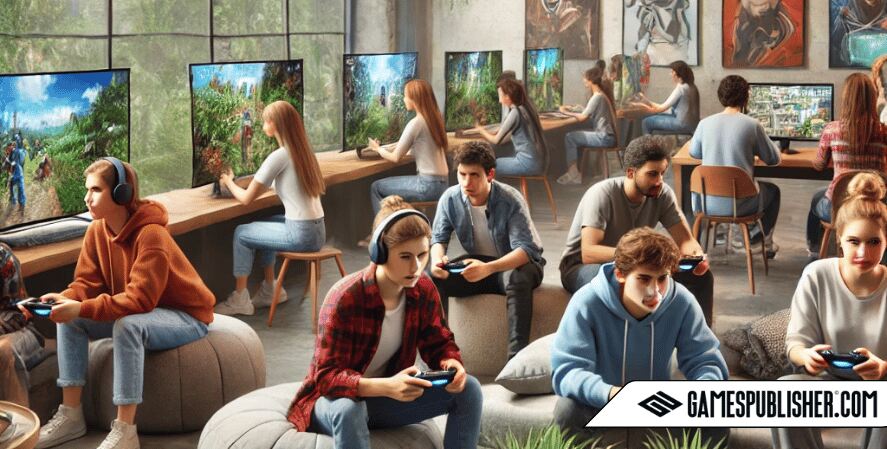Welcome to Gamespublisher.com! We’re here to help game developers and publishers succeed. Today, we’re talking about why it’s so important to know your audience when making and selling games.
Why Knowing Your Audience Matters
Knowing who will play your game is key to its success. Understanding who they are, what they like, and how they play helps you design better games and create effective marketing strategies. Whether you’re a game developer or a video game publisher, knowing your audience is essential.
Who Is Your Audience?

Demographics
Demographics are basic details about your audience, such as age, gender, and location. For example:
- Age: Teenagers might prefer fast-paced, colorful games.
- Gender: Some games may appeal more to one gender.
- Location: Players in different places might have different preferences.
Psychographics
Psychographics are about your audience’s interests, values, and lifestyles. This helps you create games that resonate with them. For example:
- Interests: A game for nature lovers could include themes of conservation.
- Values: A game that promotes teamwork might appeal to players who value collaboration.
- Lifestyles: Busy adults might prefer games that can be played in short sessions.
How to Learn About Your Audience

Surveys and Questionnaires
Surveys and questionnaires are great for gathering information about your audience. Here’s how:
- Design: Ask questions to learn about their preferences and habits.
- Distribution: Share surveys on social media, through email, or in-game.
Focus Groups
Focus groups involve talking to a small group of players to get detailed feedback about your game. This helps you understand what works and what doesn’t before a wider release.
Data Analytics
Using data analytics tools helps track player behavior and preferences. For example:
- Popular Levels: See which game levels are most played.
- Feature Usage: Find out which features are most used.
- Drop-off Points: Identify where players tend to lose interest.
Segmenting and Targeting Your Audience

Audience Segmentation
Segmenting your audience means dividing them into smaller groups based on things like genre preference and spending habits. For example:
- Casual Gamers: Prefer quick, easy-to-play games.
- Hardcore Gamers: Enjoy challenging, immersive experiences.
Targeting Strategies
After segmenting your audience, tailor your marketing and development efforts to each group. This might mean creating different game versions or targeted ads.
Designing Games for Your Audience

Gameplay Mechanics
Knowing what your audience likes can influence game mechanics. If they enjoy fast-paced action, make sure your game has dynamic controls.
Art and Aesthetics
Match your game’s visual style to your audience’s tastes:
- Bright, Colorful Graphics: Attract younger players.
- Realistic Art Style: Appeals to an older audience.
Narrative and Themes
Align game stories and themes with what interests your audience. For example, a sci-fi game should have exploration and technology themes to appeal to sci-fi fans.
Marketing and Promotion

Personalized Marketing Campaigns
Use audience data to create targeted marketing campaigns. Personalized emails, social media ads, and in-game promotions can boost player engagement.
Community Engagement
Interact with the gaming community through social media, forums, and events. Regular updates, responding to feedback, and hosting events can build a loyal player base.
Influencer Partnerships
Partnering with influencers can help you reach more players. Influencers provide authentic reviews and recommendations, making your game more appealing to their followers.
Measuring Success and Making Improvements

Key Performance Indicators (KPIs)
Track KPIs like player retention rates, in-game purchases, and user ratings to measure the success of your strategies. Regularly monitoring these metrics shows what’s working and what needs improvement.
Feedback Loops
Continuous feedback from players is crucial for making improvements. Implementing player suggestions and fixing issues keeps your audience engaged and happy.
Post-Launch Support
Ongoing support and updates are essential for maintaining player interest. Regularly adding new content, fixing bugs, and introducing new features keeps players coming back.
Conclusion
Knowing your audience is vital for successful game publishing. From identifying demographics and psychographics to creating targeted marketing strategies and designing games, audience research helps at every step. By focusing on audience insights, game developers and publishers can create more engaging and successful games.
Loading survey...

